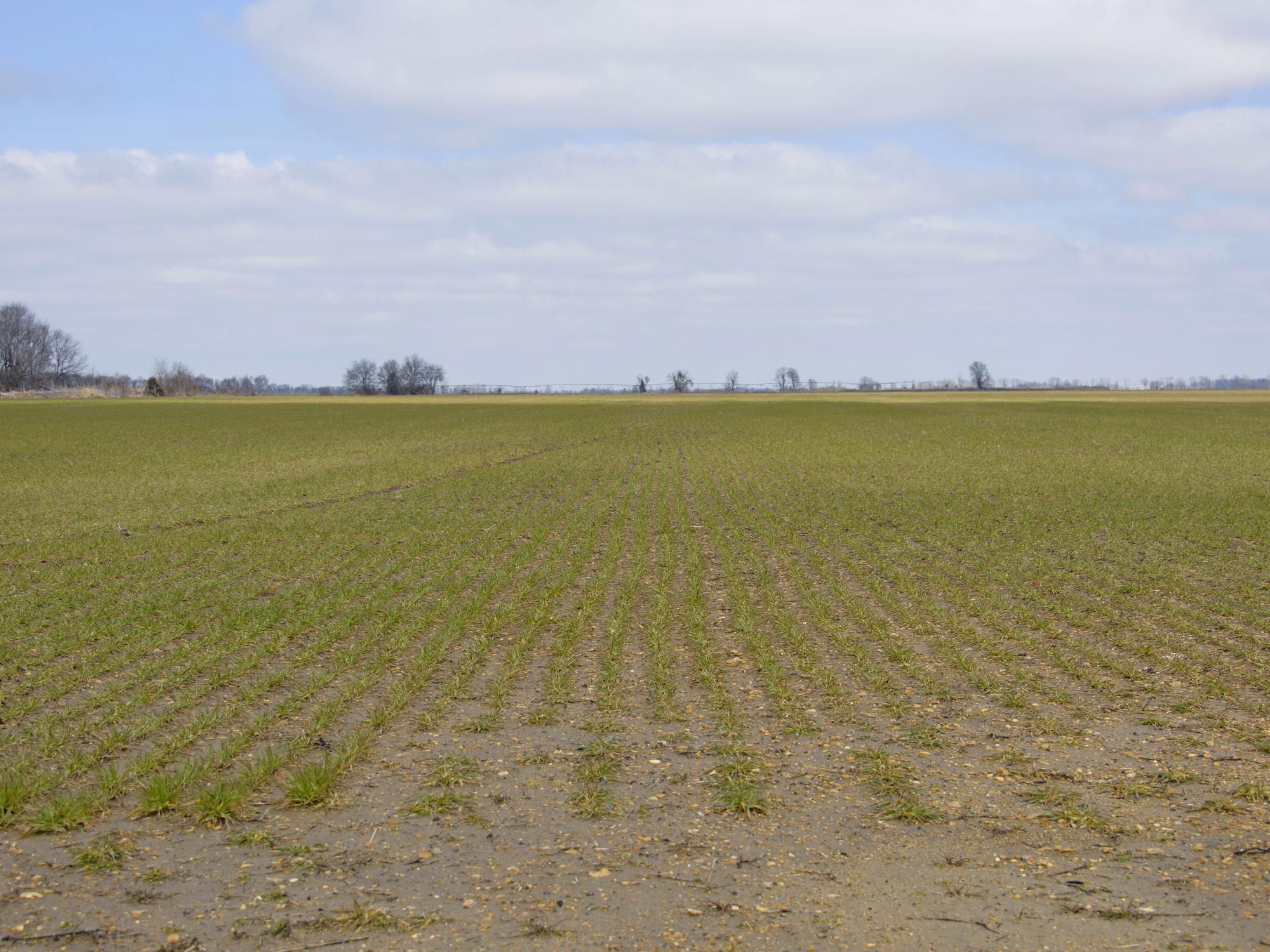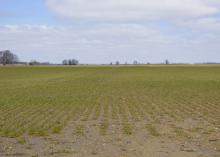Information Possibly Outdated
The information presented on this page was originally released on April 10, 2015. It may not be outdated, but please search our site for more current information. If you plan to quote or reference this information in a publication, please check with the Extension specialist or author before proceeding.
Cold, wet conditions delay state's wheat
STARKVILLE, Miss. -- Mississippi wheat fields are making up for lost time after an extended cold, wet winter.
Agronomists with the Mississippi State University Extension Service said warm weather conditions are promoting growth of wheat planted last fall in the state. Most of it should be heading soon, if not already.
Don Respess, MSU Extension agent in Coahoma County, said the frequent late-winter rains made it difficult for growers to apply herbicides and fertilizer in a timely manner.
“Wheat was looking bad until we got warmer weather and opportunities to apply nitrogen fertilizer and weed control,” Respess said. “It looks much better now, but it will probably be later maturing than in the past few years.”
Coahoma County has about 22,600 of the state’s 170,000 wheat acres. Mississippi farmers planted 26 percent fewer acres of wheat than they planted the previous year.
Erick Larson, Extension grain crops agronomist, said rainy conditions have hindered the crop thus far. Wheat growers in the entire state have faced fertilizer and herbicide application challenges, but these problems have been especially severe in the hill section, because growers there are more dependent upon ground-based application of fertilizer and pesticides.
“Some growers applied fertilizer during less than ideal conditions,” Larson said. “Typically, we prefer the soils to be relatively dry, but cloudy skies and persistent rain from the end of February until recently have kept the ground muddy this spring.”
Additionally, Larson said plants in some saturated fields suffered stunted growth.
“There is a lot of yield potential yet to be determined on this crop, depending mostly on whether the frequent rainfall pattern continues for the next four to six weeks,” he said. “We need to see a lot more sunshine and drier soils in the coming weeks to optimize potential of this wheat crop.”
Tom Allen, plant pathologist at the MSU Delta Research and Extension Center in Stoneville, said disease pressure on this year’s wheat crop has been extremely low.
“So far, we have only detected overwintering stripe rust on plants in two Delta locations,” he said. “In addition, leaf-rust-infected plants have been observed in volunteer wheat on the Delta Branch Experiment Station in Stoneville.”
Allen said disease levels have been near normal, and no treatments have been necessary yet.
Extension agricultural economist John Michael Riley said wheat prices have been trending lower than in recent years, as is the case for most of the grain crops. Last year’s large crop has pushed prices down.
“Wheat averaged $6.92 per bushel in 2013 and $5.75 in 2014. Today, the price is closer to $5.25 per bushel,” Riley said.




